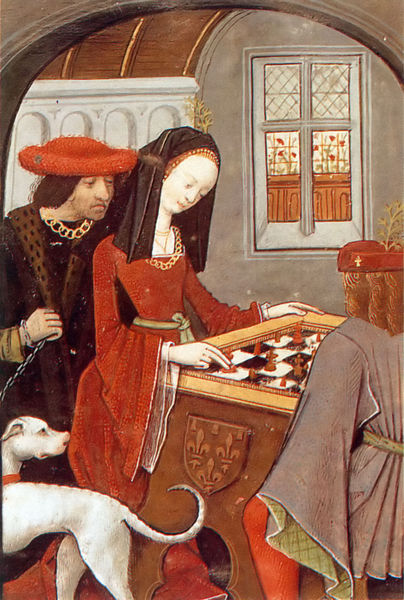On Friday, April 13, 2018, a reliquary containing the heart of Anne de Bretagne, queen consort of France, was stolen from the Dobrée Museum in Nantes. Four masked intruders forced their way into the museum, smashed the glass case with an ax, and absconded with the suspended golden reliquary, dating from 1514, along with a statue and dozens of gold coins. Thankfully, only a week later, several of the perpetrators were apprehended and the items recovered in good condition. The reliquary, worth millions of Euros, holds inestimable sentimental and historical importance not only to the citizens of the Nantais region, but to the entire nation.
Anne de Bretagne (1477-1514) is the only woman to have been queen consort of France twice. As heir to the duchy of Brittany, she spent her entire life fighting to preserve the western duchy's independence from the territorial aspirations of the kingdom of France. Forced to marry King Charles VIII of France in 1491 after defeat in battle, her marriage contract expressly stated that the marriage was concluded to ensure peace between the two regions. After Charles died of an accident in 1498, Anne took personal charge of the administration of Brittany. Pressured to marry Charles's successor Louis XII, who was already married, Anne agreed on the unlikely condition that Louis receive an annulment from Rome within one year. Unfortunately for her, the Pope came through, and Anne wed Louis in 1499. Unlike Charles, however, Louis respected Anne's rights as sovereign Duchess and issued decisions in her name. For the rest of her life, Anne strove vigorously to maintain Brittany's independence, for which she earned the love and devotion of the Breton people. Despite her valiant efforts, the duchy passed permanently into French hands when Anne and Louis's eldest daughter, Claude, married Louis's successor, François I, in 1515, the year after Anne's death.
Anne died of a kidney-stone attack at the age of thirty-seven (following sixteen pregnancies between her two husbands). Royal funerary customs of the time called for the partition of the body, allowing the heart, entrails, and bones to be buried in multiple locations. Though her body was to be entombed in the royal necropolis at Saint-Denis, Anne stipulated in her will that her heart be transported to Nantes, her beloved Breton birthplace, and deposited in her parents' tomb. A hinged reliquary was fashioned of fine gold to contain it. The inscription visible in the photograph above reads:
Ce cueur fut si tres hault
Que de la terre aux cieux
Sa vertu liberalle
Acroissoit mieux et mieux.
Mais Dieu en a reprins
Sa portion meilleure
Et ceste part terrestre
En grand deuil nous demeure.
This heart was so exalted
That from Earth to the heavens
Its bountiful virtue
Only increased.
But God took back
Its best portion
And this terrestrial part
Remains with us, in great sorrow.
(Translation mine)
The reliquary was delivered to Nantes in March 1514, where it remained until 1792, when it was emptied and sent to Paris to be melted down to fund the Revolution. Miraculously, it escaped this fate, and was returned to Nantes in 1819. It has been housed at the Dobrée Museum, currently undergoing extensive renovation, since 1886.

Fearful that last week's thieves, ignorant of the reliquary's significance, would melt it down for its monetary value, police moved quickly. Using surveillance tapes, they captured two of the four suspects and recovered the reliquary intact. Great is the relief surrounding this quick resolution, for the reliquary is an irreplaceable piece of France's cultural heritage. Anne de Bretagne was not only an astute politician dedicated to preserving the rights of the Breton people, but a generous patron of the arts. She supported writers, including Jean LeMaire de Belges and Jean Marot; musicians like Johannes Ockeghem and Jean Mouton; illuminators like Jean Bourdichon; and tapestry makers, including the weaver of the famous unicorn panels now on display at The Cloisters. Anne's descendants ruled France until 1589. How tragically ironic it would have been if her reliquary, having escaped the melting pot during the republican upheavals of 1789, had succumbed to it now, only to line the pockets of thieves who had little idea of what they had stolen.
**********
You can read more about the theft at The Telegraph (in English) and Franceinfo and Le Point (in French). Wikipedia and Pinterest have a variety of information and images of Anne de Bretagne.














